Arc Transport Carriage
Designation: Arcane Transportation Carriage.
As arcane technology and research into it progressed, it was becoming obvious that the concept of shielding the units on the ground and air was going to be a larger issue. Instituting restraints on the procedures used to create countermeasures for these dangers limited the outcomes and actual products. Leave it once more to the private sector to create a usable and functioning model for the Empire once more.
Power Generation
Both utilized as propulsion and power generation, in conjunction with the shielding gewel placed in the lower center on both sides, the Arcane Turbine creates a line connection with the other large Turbines in place. This utilizes the Sponaa effect that links four Gewels on the same level plane into a controllable structure. With these in place and the power of the turbines controlled by the operators, this allows for flight and operation of key systems within and without.
Cables on the bottom of the craft act as both energy transport and landing beams, as infused metal is surprisingly sturdy and resilient, while also allowing for energy flow at a standardized and accepted rate. Smaller cables run through the interior and connect to the smaller Gewel consoles that operators work from. These individuals take commands from the three pilots aboard.
It's amazing what they've accomplished this time. I've never seen anything like it. It looks like a massive metal crate with four oversized Gewels strapped to the corners and windows placed on the front and rear. It isn't much to look at, that's for sure, but I'll give them this. When you're trapped behind lines and need a way out, you don't want to summon a whole Airship for the task, and these coffins can at least pull a good dozen men out. Hiander, Scalise, it doesn't matter. - Knight Major-General, Duke Randell of House Herchveld
Propulsion
Working in a quartet, the arc turbine is a massive recovered chunk of Gewel that has been roughly cut and placed in housings. Then, through magical means, the four are aligned and united through the Sponaa Effect, linking them for transportation and lifting purposes. This is the same technique used by the Airships to lift them, since the Arc Transport is much smaller, the container can carry a significant load at a reduced speed, or zip through the air at a brisk pace with its regular load.
The Arc turbine was designed years before with the invention of the Banalia Engine, but have only been used in the large-scale for the use of Airships, as they require the largest of the Gewel chunks that can be created or recovered. Given the smaller scale of the vessel in question, the Arc Transportation Carriage, four Gewels are more than capable of lifting and carrying the vehicle. In fact, given the small weight in comparison to the size of the gewels allows for incredible speed given the alternative.
It was a massive advance to create smaller vessels using the same technique as the larger ships, but none could have expected that it would turn out in such a fashion. It was only the work of the Eltria Arcane Manufacturing Company that decided to take the leap on the idea. They were greeted with a pleasant increase of speed by roughly 400% over the standard speed of an airship. They ran with the idea and created a line of smaller ships to better utilize the discovery, then approached the Imperial Military with the design for patenting and royalties.
In the case of the later generations, I.E. the current model being described, a new design was added to increase speed outputs. The Omnidirectional mount was created to allow for the quartet of gewels to be adjusted in their angles. Turbines locked in the Sponaa effect are limited in their positions. Turbines "aimed" up-and-down can only lift a ship up-and-down. This is the reason that Airships were required to keep their sails and rigging. To counteract this with the newer craft designs, people would build them at a 15 degree offset so that they had both upward and forward momentum.
With the invention of the Omnidirectional Mount, this was countered and found deficient. The new design uses interlocking tooth gears that can lock in place at different angles, allowing for a near 180 degree range for each turbine. The newer model also allows for a unique change, independent angular settings for each turbine, a feat that would have been impossible mere years before. Somehow the connection is maintained, even without the uniform angles, and allows for more maneuverability in the craft.
Weapons & Armament
Though originally designed without weapons, later generations did utilize small holes in the sides for the personell inside to fight back with rifles and spells.
Armor and defense
Designed to withstand the large-scale dangers of both the natural enviroment and the occupational hazards of conflict in a military sense, the Arc Carriage is created out of thick plates of steel and bound together with only six openings in the entirety of its frame. The two large windows with which the three pilots look out through, and the four doors (two on either side) used to unload and load passengers.
Three metal beams on each side support the structure from the roof and down to the base of the front-sight windows. Each is made of a slightly infused metal that can support more than the typical counted weight. It also allows for more armor to be fused to the sides, protecting the windows and the doors. The vehicle is designed for combat scenarios and was made to withstand the splatterings of meteoric spells that could be cast.
Oh, we checked the levels. Ran the tests. Want the results? Doesn't matter, I'm gunna give em anyway since most the team couldn't believe what we saw. The alterations you had us make sir, they allowed for further damage to be withstood. Dragon fire sir, report came of a group that encountered wyverns. It held against the flames. Quite the feat!
Communication Tools & Systems
One of the natural difficulties inherint in the system is that each Gewel has a personality of its own, in a way, and must be spoken with and regularly soothed into function. The procedure is complicated but the act is better facilitated now by the usage of the command ports. Arcanists are seated at each corner of the vehicle, given their own small desks with connections to the Gewels throughout the construct. Each Arcanist is responsible for a single Arc Turbine, however two are chosen to hand the shielding Gewels that each unit is given.
In the circumstance that weapons similar to Arcanarms or the Arcannons used early in naval advancement, then arcanists would be assigned to manage and operate the weaponry. However, this feat is very rare as the vehicle is designed to work in circumstances where speed is required and little extended combat is expected. The most that one is known to see is the occasional bursts of conflict from recovery teams.
Communication is done through mind linking spells from Mentalist Casters, or through the older system of bird messengers.
Additional & auxiliary systems
Organized list of features
- Metal walls contain the innards and keep its structure safe from the dangers of elevation and outside forces.
- Metal and glass Observation ports for the drivers.
- Side doors on both walls, four in total, allow access & can be secured from the inside.
- Barrier crystals are placed to deflect the surrounding weather and spells.
- Arc cables transfer energy to the Arc Turbines and command consoles throughout the vehicle.
- Structure posts made of infused materials.
Class
Used by
Nickname
Flying Wagon
Designation
IV (Imperial Vessal)
Manufacturer
Creation Date
Hammer, 835
Owning Organization
Related Technologies

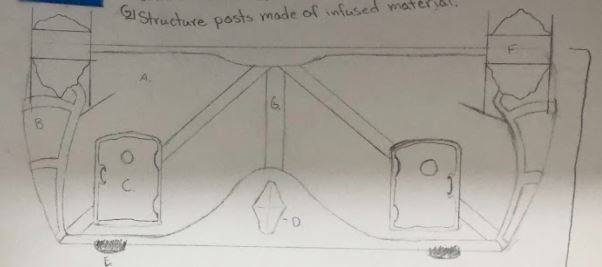
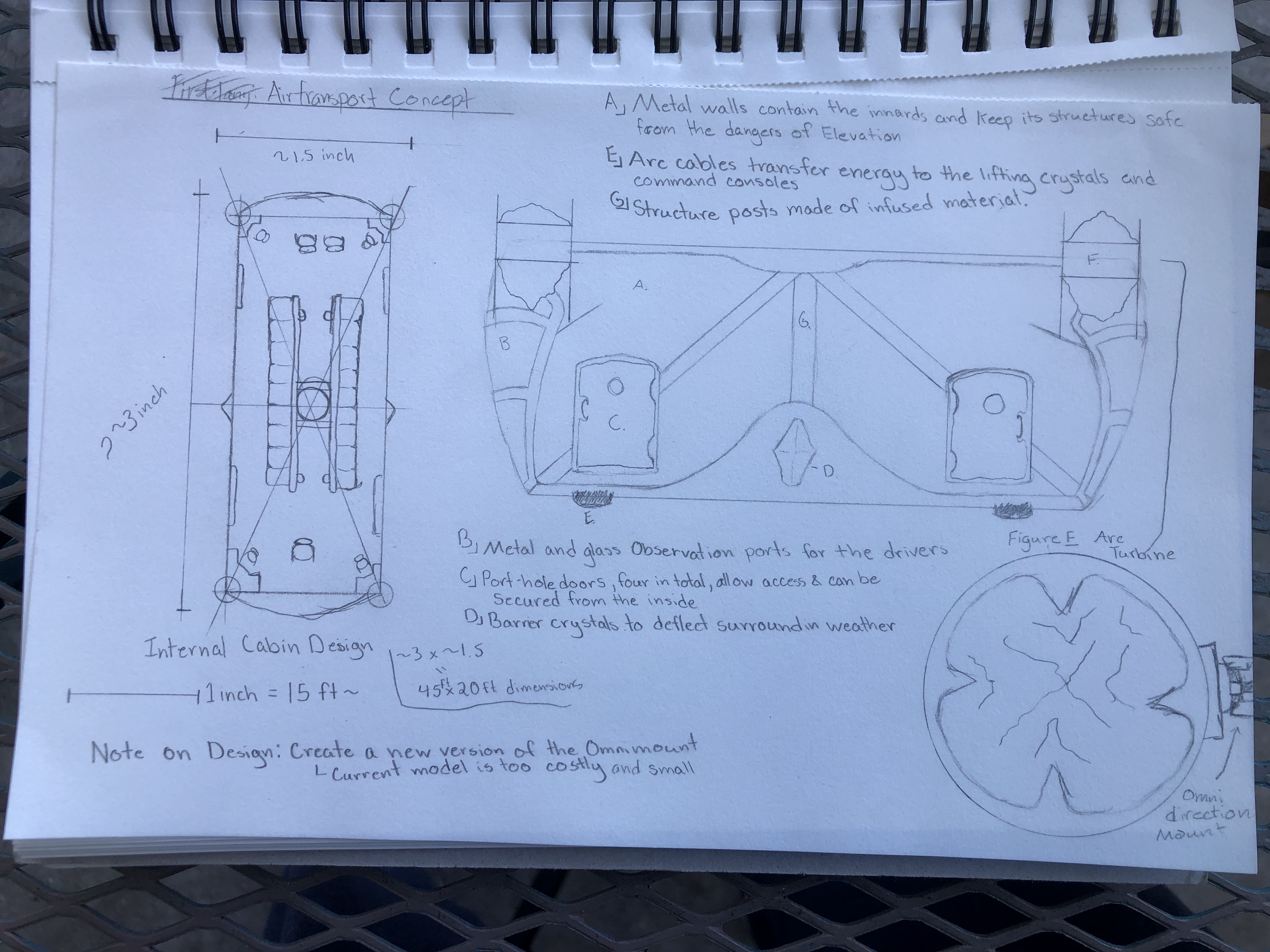
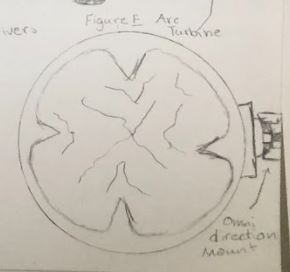
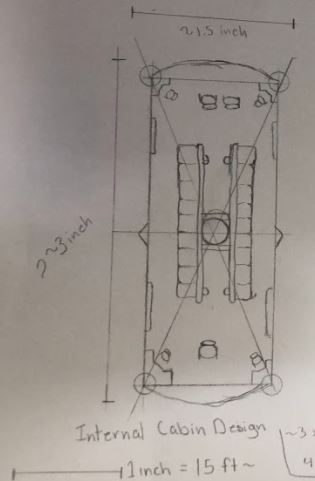
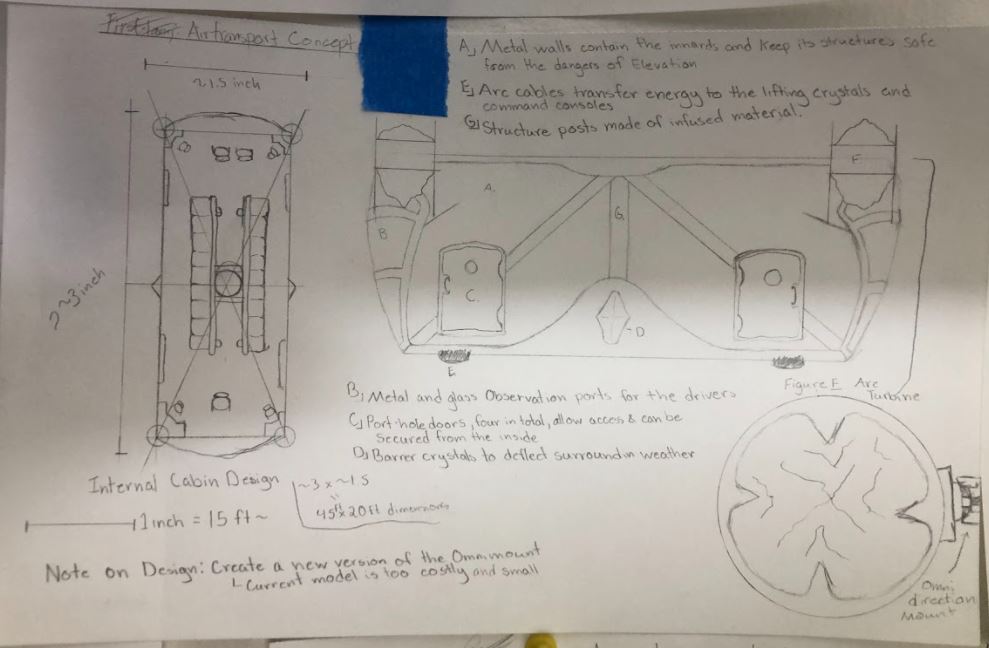

Comments